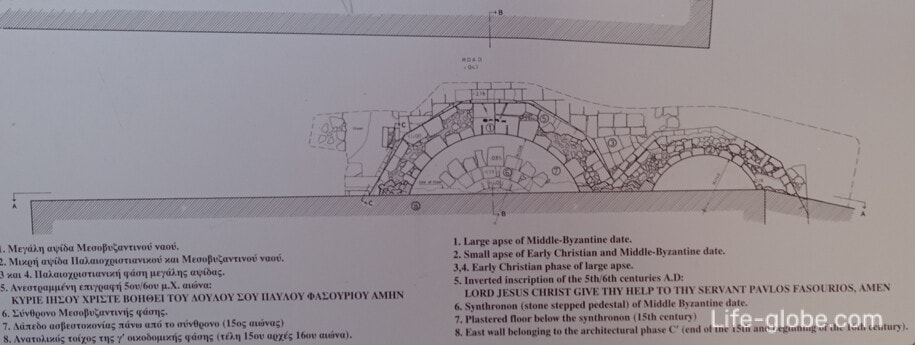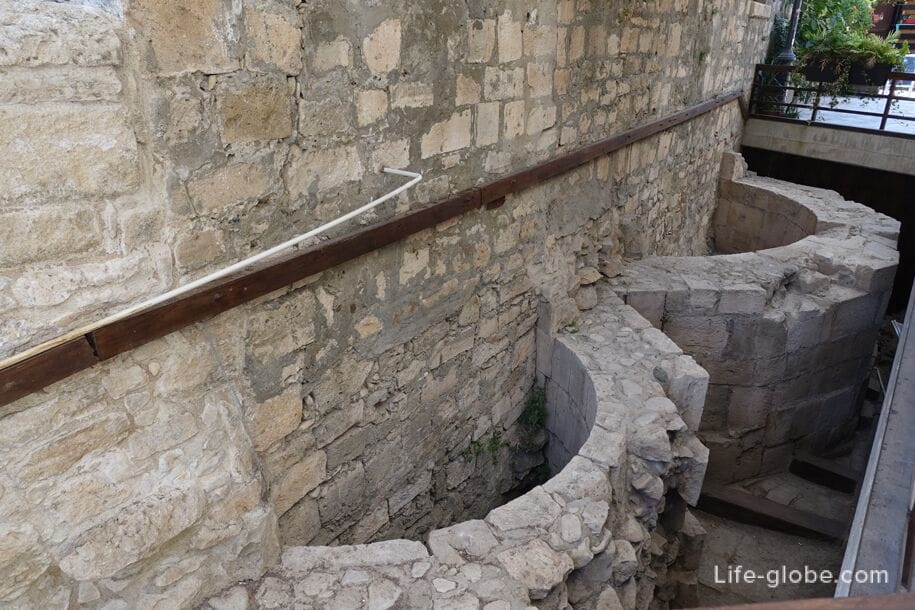
Mosque Kebir Cami or the Great mosque (Μεγάλο Τζαμί Λεμεσού / Limassol Grand mosque) is one of the most important and oldest churches of the centre of Limassol.
The mosque was built in the 16th century on the foundations of an older Christian Church and currently is the most famous mosque in Limassol, as well as a valuable monument, testifying to the rich history and mixed religious culture of the island of Cyprus.
The mosque of Kebir-Jami in the historical centre of Limassol, close to Limassol castle, at the intersection of Zak Zik and Genethliou Mitellla.
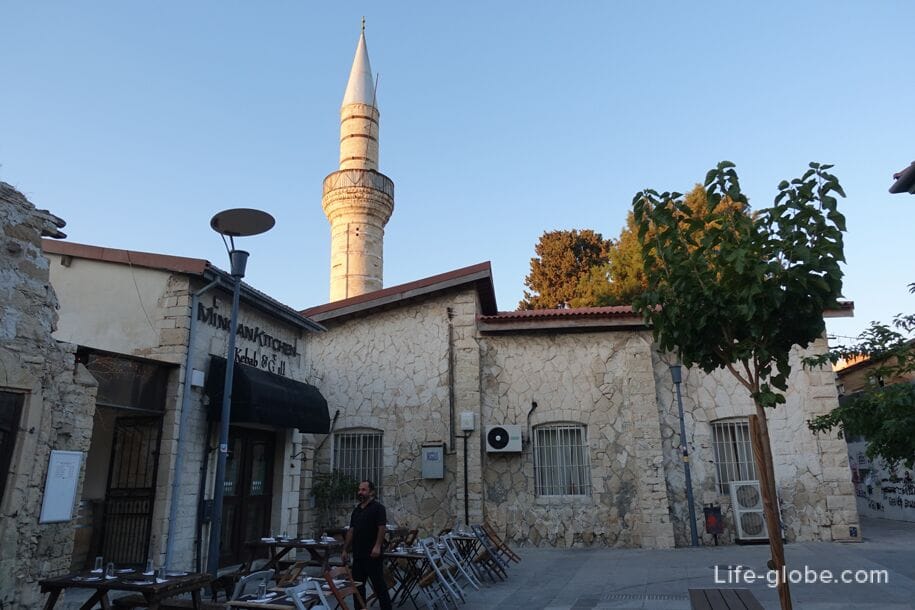

At the moment, the mosque of Kebir Djami is current. The interior of the temple consists of several rooms, separated by arches. With the permission of the Ministers to the Shrine and take some pictures.

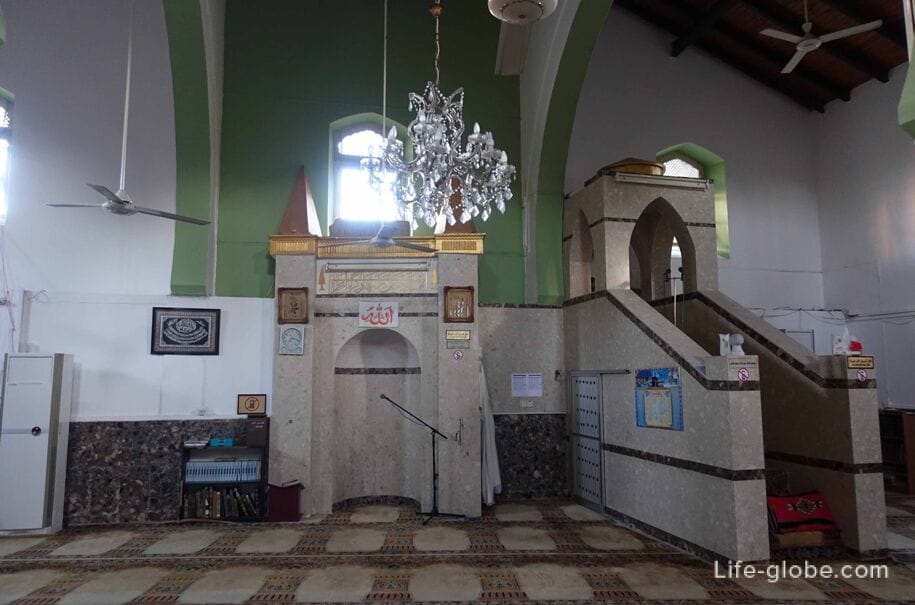
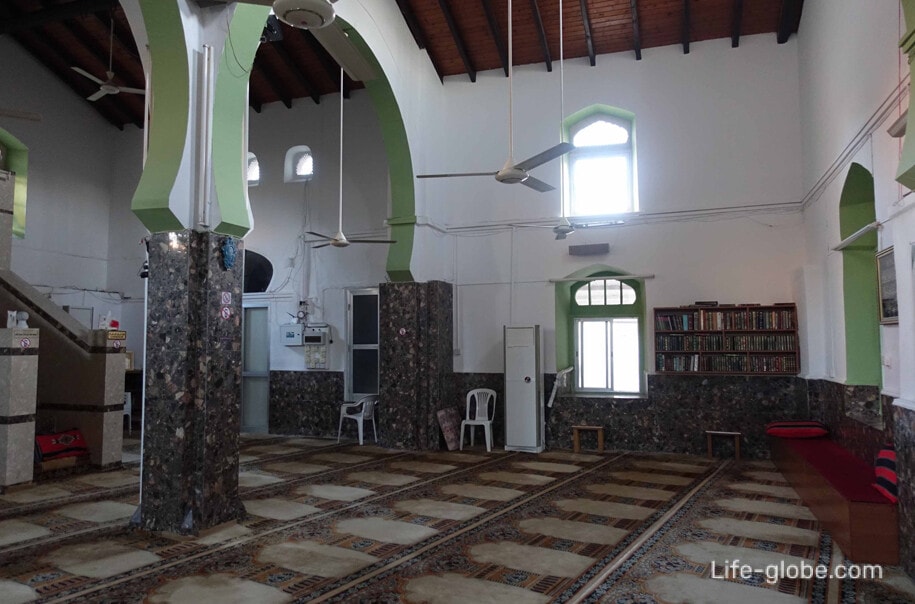
Behind the mosque Djami Kebir, from the street Genethliou Mitellla, you can see the remains of old Christian Basilica from the middle Byzantine period, the site of which was erected this mosque.
The ruins of the Church - two five-pointed apse of the Basilica dujardini (figures 1 and 2 in the diagram below) was discovered during the excavation of sewer units in 1993, under the mosque of Djami Kebir.
The exact date of construction of the Church is not yet established, but it may be closer to 8 century ad.
The exhumation of the remains of the Bishop of the 13th century on the North side of the great altar in the debris above the floor indicates that the Church was abandoned at the end of the 13th century ad.
The middle Byzantine Church was built on the ruins of earlier shrines Dating back to the period of early Christianity 5-7 century ad (number 3 in the diagram below).
Belong to this period: the main part of the South apse (figure 2 SEM below), the lower part of the Northern apse (3 and 4 in the diagram) and inverted words (5 in the diagram). In the southern apse were part of the stone sarcophagus, which indicates that this part of the Church was used as a burial chapel, probably dedicated to the local Saint (St. Tychicus or Nemesio? / Saint Tychikos or Nemesios?).
In the interior, Northern apse is a three-way bench Cintron (6 in the diagram), simulating a feature characteristic of the early Christian period. Coin of Constantine the Great (324-325 ad) and pottery Dating from the 7th century, were found in different levels during the excavations.
A plaster floor (7 in the diagram), Dating from the mid-15th century, covered synthronon of the middle Byzantine period. This is the only evidence of any renovations made on this monument of Latin bishops of Limassol.
In 1491 a devastating earthquake left the Cathedral in ruins. The third structural phase replaced the middle Byzantine period (8 in the diagram).
The Ottoman Turks, after the island of the congregation used the main part of the structure for the construction of his saints, and the use of such in religious ceremonies (1540-1583). The earliest reference to the change made by the traveler Villamena (1583), who reports that he saw a mosque built in the same way as the Christian Church.
The mosque retained this feature during the Ottoman period (1570-1876). It was severely damaged during the flood of 1894 and rebuilt to its current state in 1906.
In the first few years of British rule was conducted a large-scale restoration of the mosque, added a few extensions.
